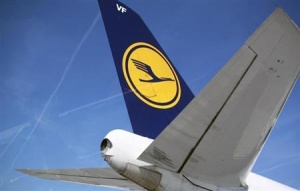Lufthansa to implement Amadeus Altéa Departure Control Flight Management

Ensuring a stable and safe load control – or in other words, that the weight and balance of the aircraft is optimised – is one of the main operational challenges airlines face.
Load control plays a vital role in increasing efficiency, on-time performance and reducing fuel costs.
And so with this in mind, Lufthansa Group and Amadeus have reached an agreement that will see the group’s airlines adopt Amadeus Altéa Departure Control Flight Management, starting with Lufthansa, Swiss International Air Lines, Brussels Airlines and Lufthansa Cargo.
Amadeus Altéa Departure Control Flight Management automates aircraft load control and optimises every flight departure by analysing the passenger and cargo load, calculating fuel requirements and defining the optimal aircraft load distribution.
Once implemented across Lufthansa Group, the system will optimise loads for the group’s 3,000 daily flights.
ADVERTISEMENT
“A stable flight handling for our worldwide operation is one of our main objectives, but so is using a flexible product,” said Claus Filkorn, ground operations, Lufthansa German Airlines.
“After evaluation of the available options, we have chosen an established, new generation flight management system.
“Our agreement with Amadeus means we can expect automated fuel calculations and functional improvements.”
In 2015, Lufthansa Group’s airlines carried over 100 million passengers, whereas Lufthansa Cargo carried 1.6 million tons of freight and post.
“Lufthansa was looking to replace its legacy system with a new, state-of-the-art flight management solution, and we are pleased that Amadeus Altéa Departure Control Flight Management was chosen,” comments Julia Sattel, senior vice president, Airline IT at Amadeus.
“Lufthansa is one of the first airline groups to adopt the solution across all of its network carriers.
“That will enable the group to further centralise its load control sites and improve operational efficiency.”

